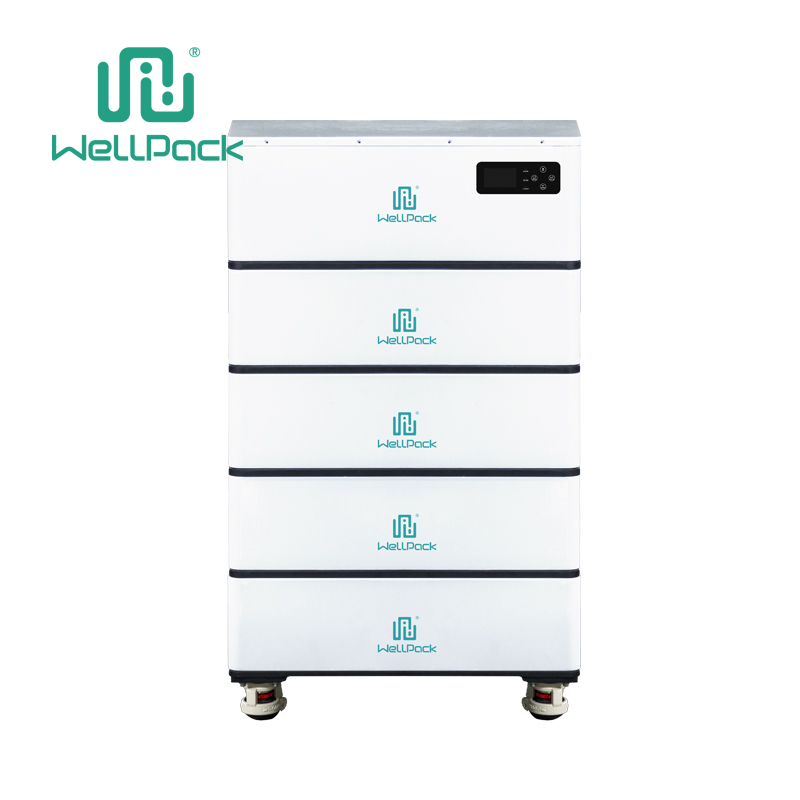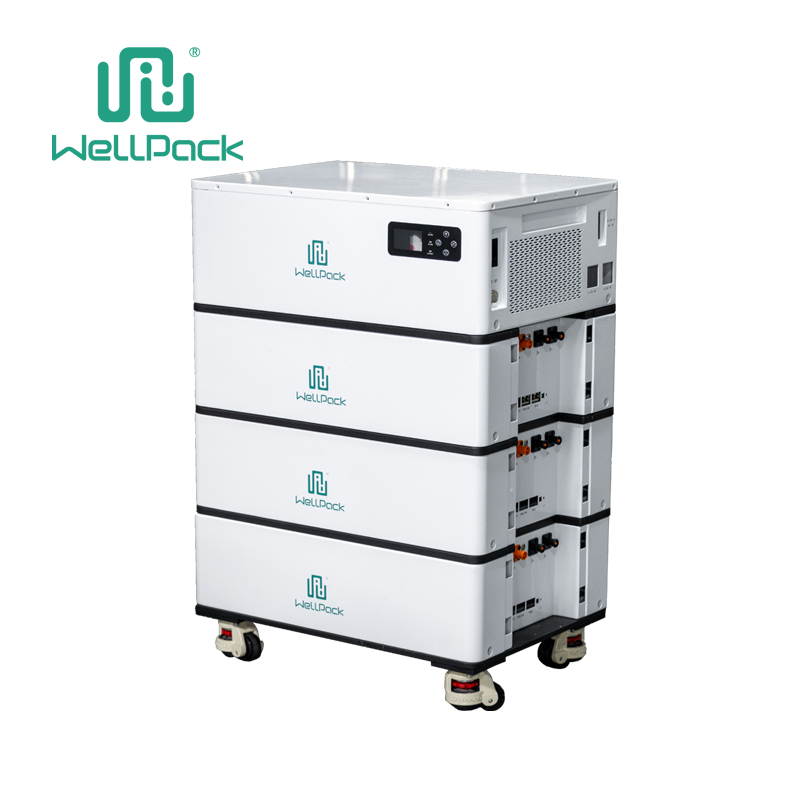
How to Effectively Address Power Storage Issues in Home Solar Systems?
2024-10-24 18:00With the growing awareness of environmental protection and advancements in renewable energy technology, more families are choosing to install solar systems for energy self-sufficiency and reduced electricity costs. However, while solar systems provide clean energy, they also face many challenges in power storage and supply. To ensure stable electricity usage during cloudy days or at night, selecting an efficient and reliable energy storage solution is crucial. The Better Tech Home Solar Residential Energy Storage System Household Energy Storage Battery System, with its outstanding performance, has become an ideal choice for solving household solar storage issues. This article will delve into common power storage challenges in home solar systems and provide a comprehensive solution through the Household Energy Storage Battery System, ensuring stable and efficient electricity for households.
Table of Contents
1. Overview of Power Storage Needs in Home Solar Systems
2. Common Power Storage Challenges and Their Impacts
1. Insufficient Power Storage
2. Low Charging Efficiency
3. Safety Hazards
4. Maintenance and Management Difficulties
3. Advantages of the Household Energy Storage Battery System in Home Solar Systems
1. High Energy Density
2. Long Cycle Life
3. High Charging and Discharging Efficiency
4. Multiple Safety Protections
5. Intelligent Management System
4. Specific Solutions to Power Storage Issues
1. Accurately Assessing Household Electricity Needs
2. Choosing the Right Energy Storage System
3. Optimizing Charging Methods
4. Implementing Intelligent Energy Management and Energy-Saving Measures
5. Strengthening Battery Maintenance and Management
5. Case Analysis
1. Case 1: Power Storage Optimization for a Suburban Home
2. Case 2: Energy Management for an Urban Residence
6. Conclusion and Recommendations
1. Overview of Power Storage Needs in Home Solar Systems Home solar systems convert sunlight into electricity through solar panels for daily household use. However, solar power generation is intermittent and fluctuates, necessitating a storage system to maintain power supply during cloudy or nighttime conditions. An efficient storage system can not only store excess electricity generated during the day but also quickly release it when needed, ensuring continuity and stability in household electricity. The Household Energy Storage Battery System is a high-capacity energy storage solution that meets most households' power storage needs, enhancing the overall efficiency of solar systems.
1.1 Electrical Devices and Daily Needs Household electrical devices span various areas, including:
· Lighting Systems: LED lights are widely used for their energy efficiency.
· Home Appliances: Refrigerators, washing machines, air conditioners, televisions, etc.
· Communication Devices: Routers, phone chargers, computers, etc.
· Living Facilities: Electric water heaters, microwaves, etc.
· Personal Electronic Devices: Laptops, tablets, etc.
The usage frequency and power consumption of these devices vary, necessitating an efficient and reliable storage system to ensure a stable power supply.
2. Common Power Storage Challenges and Their Impacts In managing energy in home solar systems, various power storage challenges arise. These issues not only affect the comfort of home life but can also pose safety hazards and financial losses.

2.1 Insufficient Power Storage
· Problem Description: The storage system's capacity is insufficient to meet the household's electricity needs during prolonged outages or high-load usage.
· Impacts:
o Power interruptions: Critical devices like refrigerators and lighting may fail to operate.
o Inconvenience: Affects the daily lives and safety of household members.
o Economic losses: Frequent power outages may lead to equipment damage or food spoilage.
2.2 Low Charging Efficiency
· Problem Description: After power restoration, the battery charging efficiency is low, preventing the battery from being fully charged in a short time, which affects emergency usage.
· Impacts:
o Extended charging time: Delays in fully charging the battery affect emergency power supply.
o Energy loss: Increased energy loss during charging reduces the overall system efficiency.
2.3 Safety Hazards
· Problem Description: The storage system may experience overheating, short circuits, or other safety issues, potentially leading to fires or explosions.
· Impacts:
o Personal safety risks: Increases the risk of injury to household members.
o Property loss: May cause damage to equipment and property loss.
o Legal liability: Safety incidents may incur legal and financial liabilities.
2.4 Maintenance and Management Difficulties
· Problem Description: Storage systems require regular maintenance and management, increasing user difficulty and maintenance costs.
· Impacts:
o High maintenance costs: Frequent maintenance and battery replacements raise long-term usage costs.
o Risk of system failure: Lack of effective maintenance may lead to system failures, affecting power supply.
3. Advantages of the Household Energy Storage Battery System in Home Solar Systems The Household Energy Storage Battery System is the ideal solution for addressing household solar storage issues due to its outstanding performance. Key advantages include:
3.1 High Energy Density Compared to traditional storage systems, this all-in-one machine has a higher energy density, meaning it can store more electricity within the same volume and weight, enhancing the system's overall efficiency and meeting high power demands.

3.2 Long Cycle Life The cycle life of the Household Energy Storage Battery System typically exceeds 5,000 cycles, far surpassing the approximately 1,000 cycles of traditional storage systems. This not only extends the lifespan of the storage system, reducing replacement frequency, but also lowers long-term maintenance costs, improving the system's economic viability.
3.3 High Charging and Discharging Efficiency This machine offers a higher charging and discharging efficiency, typically reaching over 98%. This means minimal energy loss during charging and discharging, allowing the storage battery to make full use of stored energy and enhancing overall system efficiency. Additionally, it supports fast charging, reducing charging time and increasing responsiveness.
3.4 Multiple Safety Protections The Household Energy Storage Battery System is equipped with an advanced Battery Management System (BMS) that includes multiple safety protections such as overcharging, over-discharging, over-current, and short-circuit protection, ensuring battery safety under various operating conditions. The lithium iron phosphate (LiFePO₄) material has high thermal stability, reducing the risks of overheating and combustion.
3.5 Intelligent Management System This all-in-one machine integrates an intelligent management system that can monitor and manage the battery's charging and discharging processes in real-time, optimizing energy distribution and ensuring the battery operates at its best. Users can easily check battery status, power usage, and system performance via a mobile app or computer interface, enhancing user experience and system management efficiency.
4. Specific Solutions to Power Storage Issues Based on the aforementioned advantages, users can effectively address power storage issues in home solar systems using the following specific solutions with the Household Energy Storage Battery System.
4.1 Accurately Assessing Household Electricity Needs Before optimizing the storage system, it is essential to conduct a comprehensive and accurate assessment of household electricity needs. This includes:
· Listing all electrical devices: Record all devices that require power along with their wattage and usage duration. For example, LED lighting (10W), refrigerator (200W), air conditioner (1500W), television (100W), phone charger (20W), etc.
· Calculating total electricity consumption: Based on the wattage and usage duration of devices, calculate the daily total power consumption. For instance, if the refrigerator operates 24 hours a day at 200W, its consumption is 200W × 24 = 4800Wh; the air conditioner operating 6 hours a day at 1500W consumes 1500W × 6 = 9000Wh; the total power consumption is 13800Wh.
· Considering peak electricity usage: Identify peak usage times to ensure the storage system can handle sudden high-load demands. For example, summer afternoons and evenings may be peak usage periods.
· Allowing for surplus capacity: Reserve some storage capacity to deal with adverse weather or emergencies, avoiding power shortages. For instance, reserving 20% of storage capacity means 13800Wh × 1.2 = 16560Wh.
By accurately assessing electricity needs, users can more effectively select the appropriate storage system capacity, avoiding power supply issues due to insufficient capacity.
4.2 Choosing the Right Energy Storage System Choosing the right type and capacity of the storage system based on electricity needs is a critical step. Specific suggestions include:
· Selecting a high-capacity all-in-one machine: Prioritize high-capacity all-in-one machines like the 1020kWh unit, as their high energy density, long cycle life, and efficient charging/discharging performance meet high-performance storage system needs.
· Capacity selection: Based on electricity needs, choose the storage battery's capacity. For example, 16560Wh / 1020kWh ≈ 16.2 indicates that the all-in-one machine's capacity is sufficient to meet the demand.
· Depth of discharge capability: Opt for storage systems with high depth of discharge (DoD) capabilities, allowing for full utilization of storage without compromising battery life. For example, lithium batteries typically support 80%-90% DoD, while lead-acid batteries only support 50%.
· Cycle life: Prefer storage systems with longer cycle lives, reducing replacement frequency and maintenance costs over time. For example, the Household Energy Storage Battery System can achieve over 5,000 cycles.
4.3 Optimizing Charging Methods To improve energy efficiency, users can adopt optimized charging methods. Suggested practices include:
· Maximizing solar energy usage: Schedule charging to coincide with peak solar energy generation hours, such as mid-morning to afternoon, ensuring maximum solar energy is harnessed.
· Using smart charging controls: Utilize smart controllers to automatically optimize charging times based on electricity price fluctuations, ensuring efficient energy usage.
· Integrating with grid energy: In addition to solar charging, consider integrating with grid energy during off-peak hours to maintain a balanced energy supply. For example, charging at night when grid electricity is cheaper.
4.4 Implementing Intelligent Energy Management and Energy-Saving Measures To further optimize energy use, intelligent energy management systems can be employed. Specific measures include:
· Real-time monitoring: Utilize smart meters and apps to monitor real-time power consumption and storage status, allowing users to adjust their energy usage habits.
· Implementing demand-side management: Automatically reduce or shift electricity usage during peak periods to minimize energy costs. For instance, using timers to control the operation of high-energy devices like air conditioners.
· Establishing energy-saving practices: Encourage household members to adopt energy-saving habits, such as using energy-efficient appliances and reducing unnecessary electricity consumption.
4.5 Strengthening Battery Maintenance and Management To ensure the long-term stability and safety of the storage system, users should implement effective maintenance and management strategies:
· Regular inspections: Conduct regular inspections of the battery and storage system, checking for issues such as corrosion, battery aging, and connections.
· Environmental conditions: Maintain optimal environmental conditions for the storage system, ensuring it operates within the recommended temperature range.
· Upgrading firmware: Regularly update the firmware of the intelligent management system to ensure optimal performance and security.
5. Case Analysis To better understand how the Household Energy Storage Battery System can solve power storage challenges in home solar systems, let's look at two specific case analyses.
5.1 Case 1: Power Storage Optimization for a Suburban Home A family living in a suburban area installed a solar system to reduce electricity costs. However, during cloudy days, they frequently faced power shortages due to insufficient energy storage. After installing the Household Energy Storage Battery System, the family could store enough excess solar energy generated during sunny days, effectively addressing power supply issues during low solar output periods.
5.2 Case 2: Energy Management for an Urban Residence An urban resident wanted to enhance energy efficiency and reduce reliance on grid electricity. After installing the Household Energy Storage Battery System and implementing intelligent energy management strategies, they managed to optimize charging times and reduce energy costs. By monitoring real-time power consumption, the resident minimized peak usage and effectively managed energy use.
6. Conclusion and Recommendations To effectively address power storage issues in home solar systems, it is essential to understand common challenges and employ effective solutions. The Household Energy Storage Battery System stands out due to its high energy density, long cycle life, efficient charging/discharging, safety features, and intelligent management system. Users can optimize energy storage through accurate electricity need assessments, smart system selections, optimized charging methods, and intelligent energy management practices. By implementing these solutions, households can ensure a stable and efficient power supply, enhancing the comfort and safety of home life.
